
Salmon has traditionally been the primary focus of commercial fishing in False Pass, but the fishery is evolving over time to include other fisheries. Shown in the boat harbor picture to the right are several salmon seiners and one larger "limit seiner" that is a multi-purpose boat that is also used to fish cod, crab, halibut and bottomfish. The black boat is also used at times as a salmon tender as well as for cod and bottomfish. The fish catch is delivered to King Cove for processing.
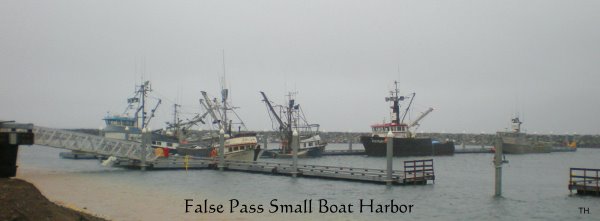
Salmon permits fished in False Pass began to decline about the time the salmon cannery burned in 1981. The graph at the right shows that in the year 1980, there were a total of 19 salmon permits fished. When the Limited Entry system was created, local fishermen were entitled to receive salmon permits in each of three fishing gear types, if they could document participation in each fishery. Owners of more than one gear permit were only permitted to fish one permit at a time, however. Over time, some of these owners sold their permits, usually to non-resident fishermen.
The graph shows that since the cannery burned, the number of permits in the community has declined markedly. By 1994, the total number of permits had declined from the original 19 to just 10. By the year 2009, the salmon permits fished in False Pass had declined to 6, less than 1/3rd the number in 1980. Some of these permit holders moved to other fishing communities in the region such as King Cove and Sand Point.
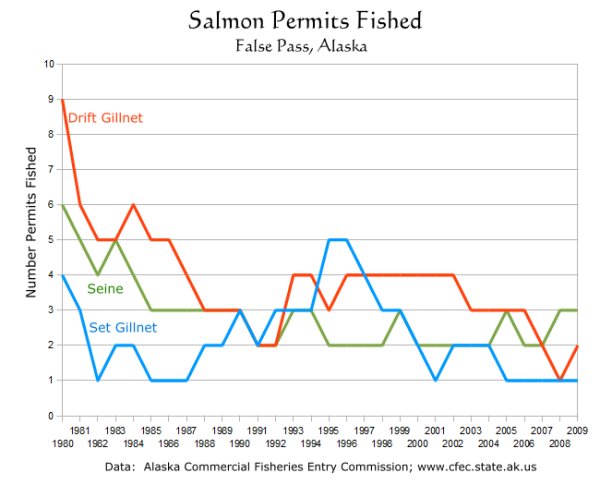
Entry Permits (other than salmon) fished in False Pass are shown in the graph on the right. These permits are issued by the Alaska Commercial Fisheries Entry Commission (CFEC).
The data show that False Pass commercial fishermen were just beginning to fish species other than salmon when the cannery burned in 1981. The trend towards greater fishery diversification is continuing. The first three halibut permits were fished in 1983 and by 1991 the number doubled to six. Herring permits started with one in 1980 and the greatest number fished was 4 in '95 & '98 and fishing took place in the Togiak area. Since the mid-1990's the fishery has been expanded to include groundfish (including cod), sablefish and crab, requiring boats capable of enduring the rigors of winter fishing. It is clear that the total dependence on salmon fishing in the community has now passed. The building of the False Pass boat harbor has made this possible.
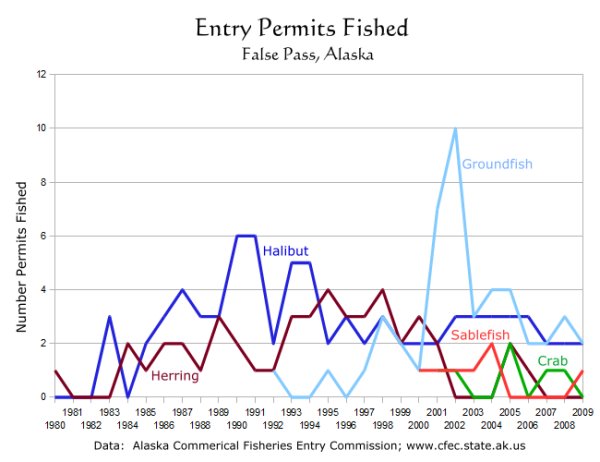
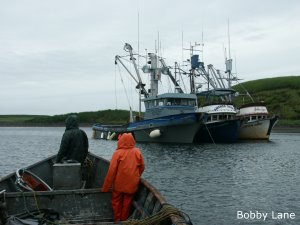
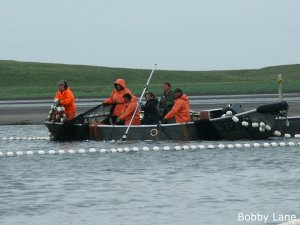
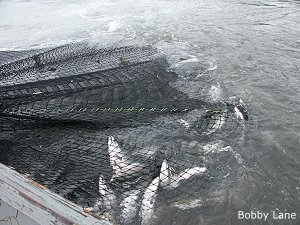
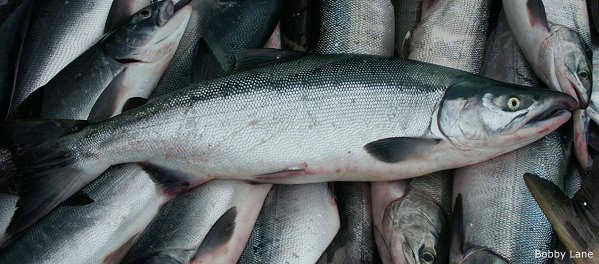
Audio Interviews with Ol' Timers about Fishing:
1) Bill Bright: Click here to hear an audio interview with Bill Bright, the last manager of the old P.E. Harris/Peter Pan Seafoods salmon cannery in False Pass. Bill spent 50 salmon seasons working in the False Pass area and knew the history of the cannery and the local fishery better than anyone. The interview was made on March 2, 2004 by Steve Puddicombe at Bill's place on the ship canal in Seattle. This MP3 audio file is approximately 1 hour 43 minutes long.
2) John Petrinovich: Click here to hear an audio interview with John Petrinovich, a salmon fisherman who has fished in the Unimak and Port Moller fisheries since 1950. This interview was made on June 9, 2001 by Steve Puddicombe and Chuck Martinson in False Pass, Alaska. The MP3 audio file is approximately 1 hour 35 minutes long.